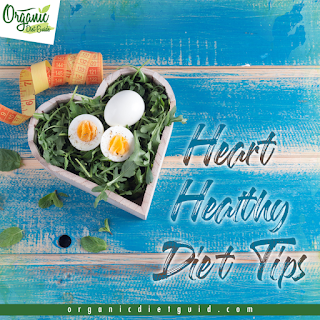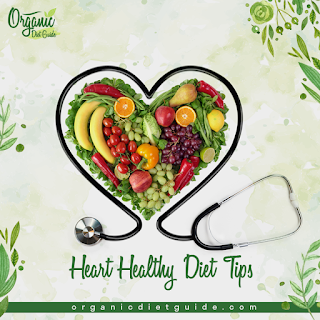Heart Healthy Diet Tips | Diet Tips To Keep Your Heart Healthy
Save Your Heart:
Healthy eating gives you energy and vitality and helps your body fight disease. Here’s what you need to know to eat well every day.
The simple lifestyle shifts in the Eat Sleep Burn ugly belly fat…
Eat fish high in omega-3s, such as salmon, tuna, mackerel, herring and trout.
|
Heart Healthy Diet Tips | Diet Tips To Keep Your Heart Healthy |
A handful of healthy nuts such as almonds or walnuts will satisfy your hunger and help your heart.
Berries are chock full of heart-healthy phytonutrients and soluble fiber. Try blueberries, strawberries, blackberries or raspberries in cereal or yogurt.
Seeds Flaxseeds contain omega-3 fatty acids, fiber and phytoestogens to boost heart health. Take them in ground or milled form to reap the greatest benefit. Chia seeds also provide omega 3, fiber and protein and can be eaten whole.
Oats are the comfort-food nutrient powerhouse. Try toasting oats to top yogurt, salads or to add into a trail mix if you are not a fan of them cooked.
Legumes Dried beans and lentils ― such as garbanzo, pinto, kidney or black beans, are high in fiber, B-vitamins, minerals and other good stuff. Veggie chili, anyone?
Best Diets Weight loss Diet plans
A 4-ounce glass of red wine (up to two for men and one for women per day) can help improve good (HDL) cholesterol levels.
Soy Add edamame beans or marinated tofu in a stir-fry with fresh veggies for a heart-healthy lunch or dinner.
Red, yellow and orange veggies such as carrots, sweet potatoes, red peppers, tomatoes and acorn squash are packed with carotenoids, fiber and vitamins to help your heart.
Green veggies Popeye was right ― spinach packs a punch! So does kale, Swiss chard, collard/mustard greens and bok choy.
Use these sandwiches and salads instead of lettuce. Broccoli and asparagus are filled with mighty nutrients such as vitamins C and E, potassium, folate, calcium and fiber.
Secret Anabolic Recipes | Cook Healthy | Muscle Building Meals
Fruits such as oranges, cantaloupes and papaya are rich in beta-carotene, potassium, magnesium and fiber.
Dark chocolate is good for your heart health. The higher the percentage of cocoa the better! (The fiber and protein increase with higher cocoa and the sugar decreases).
If you are a fan of milk chocolate. start with at least 70% cocoa.
Tips for eating a heart-healthy dietHealthy eating for a healthy heart is a pattern. It doesn’t focus on one type of food or nutrient, but rather on what you eat over days, weeks, and months.
This style of eating is naturally low in saturated and trans fats, salt, and added sugar. It’s rich in whole grains, fiber, antioxidants, and unsaturated fats.
Eat more fruit and vegetables
A diet full of a variety of fruit and vegetables is linked to healthier hearts and a lower risk of heart disease.
Swap to wholegrainWholegrain cereals include more of the natural grain. This means they have more nutrients like dietary fiber, B vitamins, vitamin E, and healthy fats.
Make healthy fat choices
The best fats to include in your diet are monounsaturated and polyunsaturated (omega-3 and omega-6) fats. You can find these healthier fats in avocados, nuts, fish, and sunflower seeds.
Use herbs and spices instead of salt
Eating too much salt is bad for your heart. The sodium in salt can increase your risk of developing high blood pressure, a major risk factor for heart disease.
Tips for being more activeDoing regular physical activity reduces your risk of having a heart attack or developing heart disease. Keeping active helps to control common heart disease risk factors, including:
High blood pressure,
High cholesterol, and
Being overweight.
Regular physical activity can also help strengthen your bones and muscles. It can help you feel more energetic, happier, and relaxed.
Move more
Any physical activity is better than none.
Set realistic goals
Start with small, realistic goals and work your way up to the recommended 30-60 minutes of moderate-intensity physical activity (such as brisk walking) on most days of the week.
Choose activities you enjoy
When you enjoy being active, you’re more likely to do it more often.
Get social
Stay motivated by doing physical activity together with a group of friends or family, or even with your dog.
Sit less
Adults who sit less throughout the day have a lower risk of early death, particularly from heart disease.
Tips to help you be smoke-free
The first step to quitting is understanding the risks associated with smoking.
Smoking damages the blood vessels leading to your heart, brain, and other parts of your body. This makes you four times more likely to die of heart attack or stroke and three times more likely to die from sudden cardiac death.
Keep trying
Quitting smoking isn’t always easy. It can take persistence. You can do it with planning, practice, and help.
Reach out for support
To protect the health of your family and friends, stop smoking inside your home, car, and other enclosed places.
When you quit smoking, your risk of heart attack and stroke decreases almost straight away.
Get more information and support to help you quit smoking.
Tips to help you understand and control your cholesterol levels
Cholesterol is a fatty substance that moves around your body in the blood. Your body produces cholesterol naturally, and it is also found in some foods. Cholesterol is essential for the normal functioning of your body.
Lifestyle Changes to Improve Your Cholesterol
There are two main types of cholesterol:
High-Density Lipoprotein: HDL or ‘good cholesterol’.
Low-Density Lipoprotein: LDL or ‘bad cholesterol’.
‘Bad cholesterol’ can stick to the walls of your arteries, causing a build-up of cholesterol, known as plaques. This build-up can create blockages in your arteries and contribute to increasing your risk of a heart attack or stroke.
Get to know your dietary fats
Eating too much saturated and trans fat can elevate blood cholesterol levels. Saturated and trans fats can be found in foods like pizza, cakes, biscuits, pastries, and deep-fried foods.
Eat a heart-healthy diet
Fresh foods should make up the main part of your diet. Choose a wide variety of fruit and vegetables and a variety of healthy protein sources including fish and seafood, lean meat, poultry, legumes, nuts, and seeds.
Get to know your levels
A key step in controlling your cholesterol is finding out what your blood cholesterol levels are. If you’re 45 years or older (30 years or older for Aboriginal and Torres Strait Islander peoples) you should see your doctor for a Heart Health Check.
If your doctor recommends medication, take as prescribed
The best way to reach your treatment goals and enjoy the benefits of better heart health is to follow the advice of your doctor or pharmacist and take medicines exactly as directed.
Tips for a Heart-Healthy Diet:Healthy Diet Plant-Based Diet
Control your portion size
How much you eat is just as important as what you eat. Eating until you feel stuffed can lead
to eating more calories than you should. To help control food portions try using a small plate
or bowl! When you are going to eat larger portions eat low – calorie, nutrient-rich foods.
Keep track of the servings you eat. If you are not comfortable with your judgment of food
portions, try using measuring cups and spoons, or a food scale.
Eat more vegetables and fruits
Fruits and vegetables are a great source of vitamins and minerals. They are also low in calories
and rich in dietary fiber. Fruits and vegetables also contain substances that may prevent
cardiovascular disease. Keep fruits and vegetables washed and cut in your refrigerator or in a
fruit bowl in your kitchen so you remember to eat them! Another way to increase fruit and
vegetable intake is to choose recipes that use them as the main ingredients (stir fry, fruit
mixed salads, etc.).
Try and choose more fresh for frozen fruits and vegetables, low-sodium canned vegetables,
and canned fruit packed in juice or water. Try and limit coconut, vegetables with creamy
sauces, fried or breaded vegetables, canned fruit packed in syrup, and frozen fruit with sugar
added.
Select whole grains
Whole grains are good sources of fiber and other nutrients that play a role in regulating
your blood pressure and heart health. You can increase the number of whole grains in a heart-healthy diet by making simple substitutions for refined grain products. Try and limit white
bread, muffins, frozen waffles, cornbread, donuts, biscuits, quick bread, cakes, pies, egg
noodles, buttered popcorn, and high-fat snack crackers. Instead choose whole grain bread,
high fiber cereal (5g or more), brown rice, barley, buckwheat, whole-grain pasta,
and oatmeal.
Limit unhealthy fats
Limiting how much saturated and trans fats you eat is an important step to reduce your blood
cholesterol and lower your risk of coronary artery disease. An easy way to reduce saturated
fat in your diet is by trimming fat off your meat or choosing lean meats. You can also add less
butter, margarine, and shortening when cooking. Another thing you can do is use low-fat
substitutions when possible.
Try and limit butter, lard, bacon fat, gravy, cream sauce, nondairy creamers, hydrogenated
margarine and shortening, cocoa butter, and coconut oils. Instead choose olive oil, canola oil,
vegetable oil, margarine, nuts, seeds, and avocados.
|
Heart Healthy Diet Tips | Diet Tips To Keep Your Heart Healthy |

